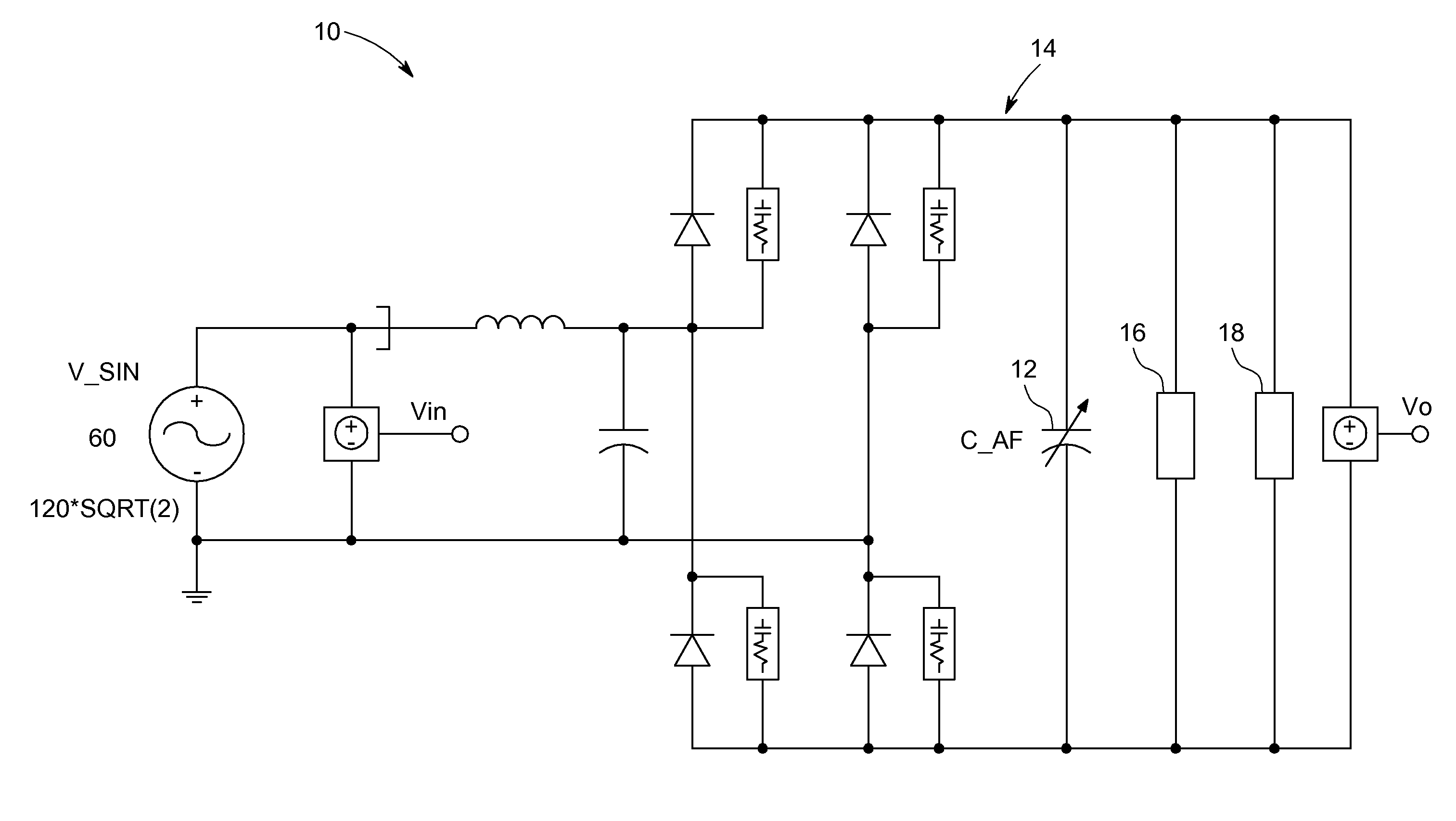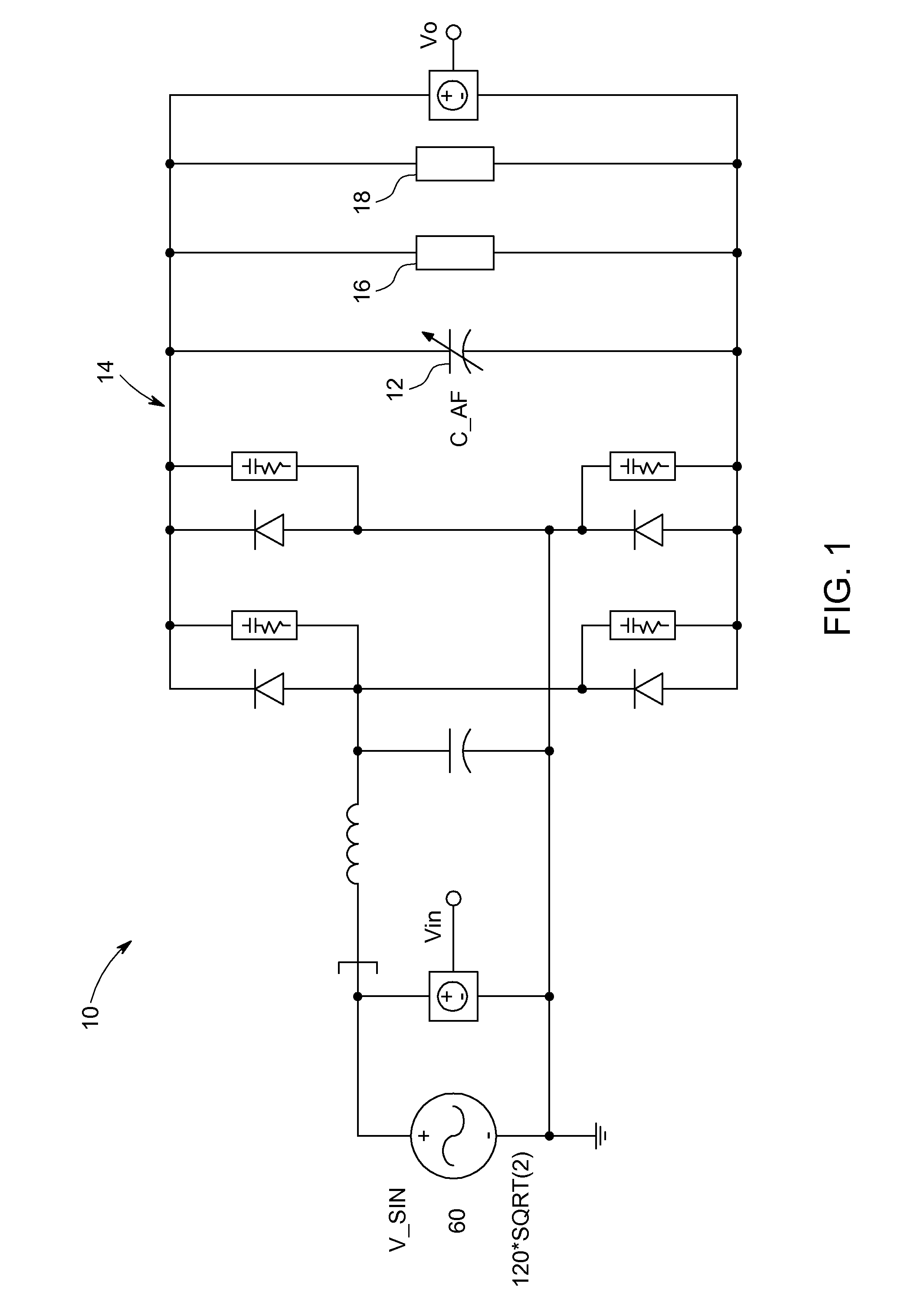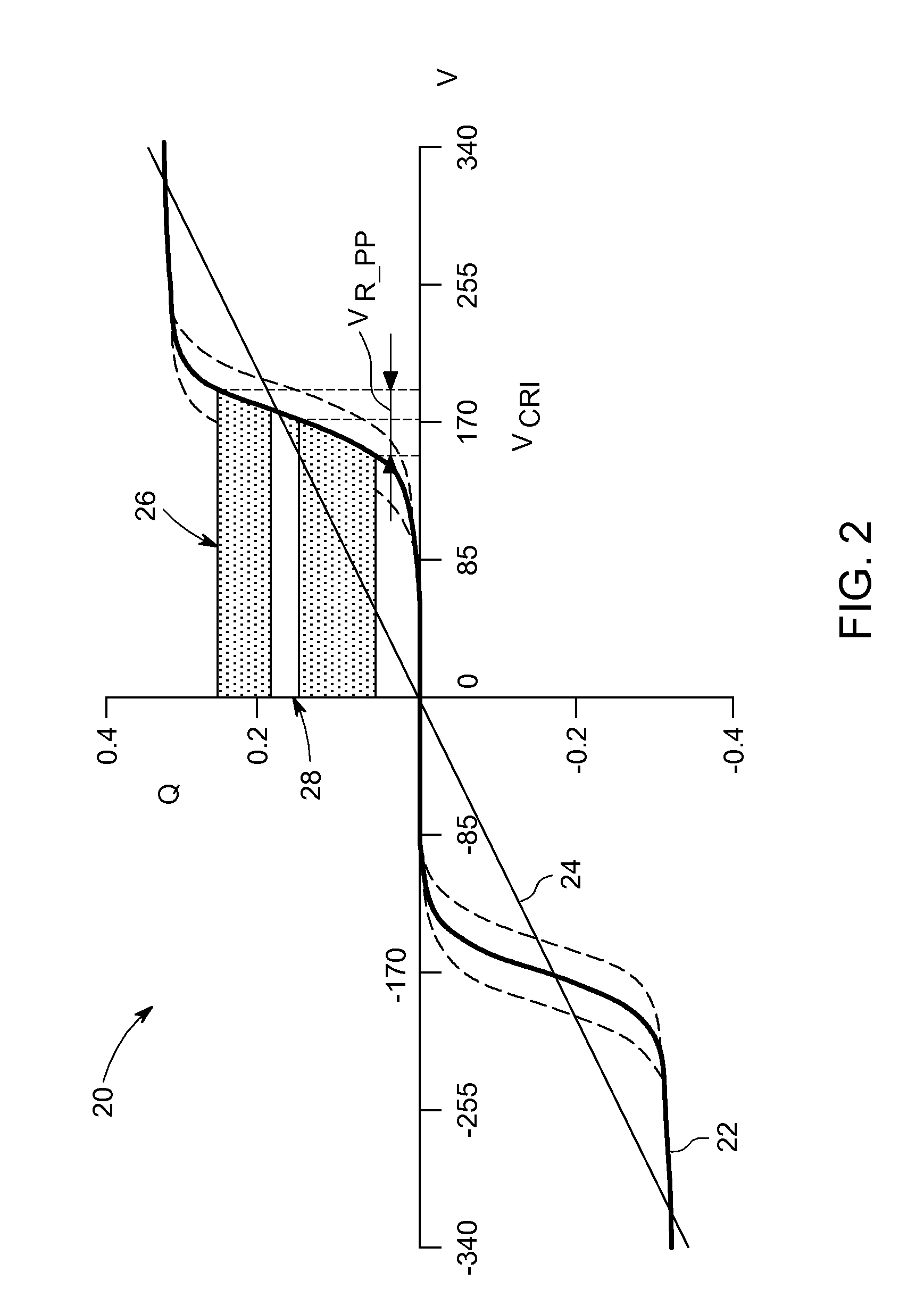Antiferroelectric capacitor-enabled power converter
- Summary
- Abstract
- Description
- Claims
- Application Information
AI Technical Summary
Benefits of technology
Problems solved by technology
Method used
Image
Examples
Embodiment Construction
[0028]The embodiments and principles described herein were discovered by the present inventors to be useful in substantially reducing the volume of a power converter while simultaneously improving the power converter reliability. A short discussion about particular aspects of capacitors is first set forth below to provide a better understanding of the embodiments and principles described herein with reference to the figures.
[0029]Conventional DC-link capacitors typically have fixed capacitance values with nominally low values of relative dielectric permittivity around 100, which results in fairly low energy densities. The capacitance C of a parallel-plate capacitor is given, for example, by C=0rA / d, where 0, r, A and d are permittivity of free space, relative dielectric permittivity of the contained dielectric, plate area and plate separation, respectively. Low relative dielectric permittivity for a given capacitance means large capacitance volume. The energy handling capability of ...
PUM
 Login to View More
Login to View More Abstract
Description
Claims
Application Information
 Login to View More
Login to View More - Generate Ideas
- Intellectual Property
- Life Sciences
- Materials
- Tech Scout
- Unparalleled Data Quality
- Higher Quality Content
- 60% Fewer Hallucinations
Browse by: Latest US Patents, China's latest patents, Technical Efficacy Thesaurus, Application Domain, Technology Topic, Popular Technical Reports.
© 2025 PatSnap. All rights reserved.Legal|Privacy policy|Modern Slavery Act Transparency Statement|Sitemap|About US| Contact US: help@patsnap.com



